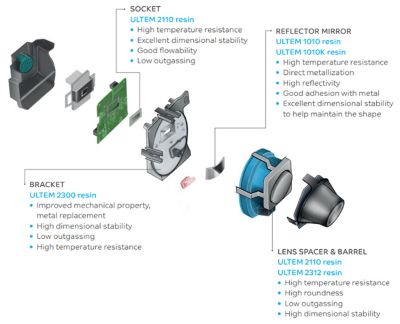-
-
Accédez au logiciel étudiant gratuit
Ansys donne les moyens à la prochaine génération d'ingénieurs
Les étudiants ont accès gratuitement à un logiciel de simulation de classe mondiale.
-
Connectez-vous avec Ansys maintenant !
Concevez votre avenir
Connectez-vous à Ansys pour découvrir comment la simulation peut alimenter votre prochaine percée.
Pays et régions
Espace client
Support
Communautés partenaires
Contacter le service commercial
Pour les États-Unis et le Canada
S'inscrire
Essais gratuits
Produits & Services
Apprendre
À propos d'Ansys
Back
Produits & Services
Back
Apprendre
Ansys donne les moyens à la prochaine génération d'ingénieurs
Les étudiants ont accès gratuitement à un logiciel de simulation de classe mondiale.
Back
À propos d'Ansys
Concevez votre avenir
Connectez-vous à Ansys pour découvrir comment la simulation peut alimenter votre prochaine percée.
Espace client
Support
Communautés partenaires
Contacter le service commercial
Pour les États-Unis et le Canada
S'inscrire
Essais gratuits
ANSYS BLOG
December 15, 2022
Lighting the Path Ahead with New Materials
Finding cleaner and smarter materials for automotive headlight design has never been easier.
With Ansys Granta MI materials data management software, you have access to comprehensive data, such as MaterialUniverse™ dataset, which includes technical, economic, and environmental materials for thousands of engineering materials, and the advanced Global Polymers library with in-depth information on over 100,000 polymer grades, including polymers from SABIC.
SABIC is a leading petrochemicals manufacturer globally which creates high-performance polymers that are well-equipped for headlamp applications. By using Granta and Ansys multiphysics simulation tools, material selection is seamless throughout the design process for automotive projects and more.
SABIC produces a wide range of materials solutions, including ULTEM™ resin family of high heat solutions, LNP™ compounds and PC Copolymer resins, NORYL™ resins, etc. The data for these materials is available in the materials libraries of Granta MI Enterprise and Ansys Granta Selector, and can be easily exported into a wide range of Ansys simulation platforms.
A Reason for Resin
ULTEM polyetherimide (PEI) resin is used in a variety of applications spanning a wide variety of industries, including electronics, automotive, healthcare, industrial equipment, and infrastructure. These resin grades are typically injection-molded into required geometries which allows mass production at industrial scale.
Digital Matrix LED Headlights
Headlamps are an important styling component for cars for brand recognition. New technologies like LEDs provide high performance and adaptable lighting, but also new design challenges to manufacturers. The designs involve high geometrical complexity and many components. The LEDs and electrical components can generate high temperatures which can affect the geometry and therefore the lighting performance. There are strict automotive specifications regulating how far the headlamp beam can deviate in use to avoid dazzling oncoming traffic.

Figure 1. SABIC produces a wide range of branded materials solutions, including ULTEM™ resins, LNP™ compounds, NORYL™ resins, LEXAN™ copolymers, and EXTEM™ resins. A selection of SABIC’s ULTEM resins are shown here.
SABIC’s ULTEM resin addresses high temperature design requirements (up to 230°C) for digital matrix headlights. Additionally, the material’s dimensional stability and low outgassing performance are comparable to metal and glass solutions, but at a lower weight. Potential digital matrix LED headlight applications include the lens barrels, spacers, brackets, reflector mirrors, and digital micromirror device (DMD) sockets.
Design Smarter
Using digital models to validate performance and manufacturability before physical manufacturing and testing has become an industry norm to reduce redesigns, ensure development timelines, and adhere to cost objectives. With access to high quality, complete, and comparable multi-point material data, engineers and designers can ensure the accuracy of their virtual validations, which adds confidence to the design process and reduces design error and subsequent product failure.
Similarly, multiphysics is the desired approach among many engineers. Fortunately, SABIC and Ansys have teamed up to provide detailed materials information on ULTEM resins that can be used directly in key Ansys solvers. The data includes nonlinear mechanical properties such as stress-strain and creep curves as well as thermal and electrical properties that account for a wide range of temperatures. The ULTEM materials data is available in the Global Polymers materials library in Granta MI and Granta Selector and can be exported into Ansys simulation platforms, including Ansys Workbench and Ansys Mechanical.
Car manufacturers aren’t the only ones exploring multiphysics for their optical designs. Last year, a university student team designed a solar race car using Ansys multiphysics tools, including Speos for headlight design. Using Speos, the team designed lights that met competition regulations and used less power. This not only enabled a more powerful motor, but also significantly reduced concerns of overheating. The smarter choice of materials led to smaller and cheaper lights. The team also used Mechanical for structural analyses and Ansys Fluent for computational fluid dynamics (CFD) simulation.
Take Five: Material Selection in Five Easy Steps
Let’s explore the Granta-SABIC workflow using an ULTEM resin selection as an example.
By using simulation-ready materials data from Granta — including SABIC’s polymers — with Ansys’ multiphysics simulation tools, you can complete a full headlight design.
Steps:
- Locate and select the desired ULTEM resin from the Granta materials database.
- View all data available, including thermal analyses.
- Move to the simulation application of your choice. For example, designers often use the Workbench simulation integration platform to incorporate Mechanical for structural and temperature dependents.
- Integrate other multiphysics tools as needed, such as Ansys IcePak electronics cooling simulation software or Ansys Speos optical design and validation software.
- Assign the resin as a preferred material in Granta MI.

Figure 2. Assign and save recommended or preferred material in Ansys Granta MI Enterprise.
With the ability to select materials and create models from the same platform, designers can achieve high quality designs, compare materials across applications during the entire design process to ensure best materials selection, and increase the accuracy of virtual validations.
ULTEM resin, for example, supports demanding product designs that can be processed at scale. It comprises a unique blend of high heat resistance, stable dielectrics, strength, stiffness, and dimensional stability. It is inherently halogen-free and flame resistant, while being infrared (IR) transparent, hydrolytic, and chemically stable.
Materials Support from Start to Finish
Granta MI Enterprise is fully embedded with leading systems — including computer-aided design (CAD), computer-aided engineering (CAE), and product life cycle management (PLM) —to ensure accurate application of materials data and properties throughout each design process.
Additionally, from test data to simulation software, Granta ensures that data and results remain fully traceable. Data remains linked to simulation models, which allows users to trace the history of data and analyses that fed their simulation. This provides engineers and designers with confidence in their results, while making it easier to run further analyses later and protect the corporate intellectual property (IP) embodied in the simulation work.
To learn more about Granta, schedule a demo today.